The snail is the symbol of Slow Food. It was also the subject of our stage yesterday. More specifically we learned about the farming of snails. We visited the International Institute of Heliciculture
which was founded in Piemonte in response to a law prohibiting the gathering of wild snails. The law was passed to prevent the extinction of the snails from over gathering. The Institute developed a way to farm snails and their purpose became to help those who are interested in establishing snail farms to get started. There are now snail farms in many parts of the world with much of the growth in the number of farms driven by the large number of European countries who also have prohibited the gathering of wild snails.
We learned that there are three good reasons for farming snails. First, the product is safer. A snail foraging in the wild will eat many things including some things that are poisonous for humans but that are tolerated by snails like Aminita mushrooms and those toxins would be passed in the snail meat. When farmed, the snails are fed only green vegetables and thus are safe. Second is the matter of quality due to the age of the snail. In the wild the snail is subject to varied climatic conditions. When it is wet the snails will eat and grow. When it is very dry the snail will go dormant. Thus by the time the snail is the size for collecting it may be 6 years old. The meat will be very tough and is harder to cook and eat. When farmed the snails are kept in a wet environment with greens and grow rapidly. They are ready for market in 1 to 1 1/2 years and are more tender and easier to cook. The third reason is economic. When they are fed only vegetables they cost less and the fat content is less with higher protein content. When raised in countries that are not that well off, the production costs are low and profit can be higher.
The demand for snails continues to grow for several reasons. People eat snails, of course, and those people are divided into 2 groups. Those who depend on snails as a protein source and those who eat snails as a gourmand treat. Snails have also become important in the health and cosmetic industries. The mucous that snails produce contains anti-inflammatory chemicals and also substances that contribute to smoother skin by reducing wrinkles. Some countries produce snails almost entirely for industrial chemical use as it is less expensive to handle and ship snail “saliva” than snail meat.
Snails aren’t that difficult to raise and one person can raise a considerable number of snails. With an automated drip irrigation system snail production doesn’t require daily attention and, in fact, you could be gone a couple of weeks without causing problems for your farm animals.
I began to think that snail farming was something I should consider but there are a few things I’d have to deal with. First, the United Stated prohibits importation of live snails (they have to be canned or frozen) which would make obtaining my breeding stock difficult. Next, I would need to survey the market to see what the local demand would be for my product. I probably could start by talking with the meat buyer at Just Food Co-op. Also, we were told that the biggest problem contributing to the failure of snail farms was a psychological one. Apparently not being able to see your live stock each day — they hide in the daytime and feed at night — can be stressful and has resulted in divorce in some couples who have entered the snail farming business. June already seems somewhat reluctant to get into that type of farming so the idea may be dead from the start.
I have to admit that I didn’t know what to expect from this field trip, and my expectations were not high, but I found it fascinating! I am half way serious about looking at getting into heliciculture.
We then visited Salumeria Dho Giuseppe in Centallo. There Beppe and his wife Bruna provided us with great hospitality. We had a tasting lunch featuring several of their products including salame cotto, salami crudo, prosciutto cotto, and lardo.
It was my first experience with lardo. I had read about it and was eager to try it. It was wonderful! It basically is made up of fat which has been brined and has some herbs and spices added. It is difficult to explain how something that many people wouldn’t even try, because…well, because it is mostly fat, can be so tasty.
I was talking to one woman in our class afterward and she said that she had to confess that she is the type of person who removes the fat from prosciutto before she eats it, but…she loved the lardo!
After lunch Beppe had us gown up
and took us into his small shop where he and an assistant showed us the process for making the products they make. They did all the steps for us to watch. It was fascinating!
Again I reached my maximum picture file size for this posting so I’ll save the rest of my pictures for another day.
Today we went to a rice farm and mill, and tomorrow we have to visit two wineries. Nobody told me that school would be so time consuming. I’m way behind on keeping up with my blog! I hope I will be able to catch up soon.
Ciao!


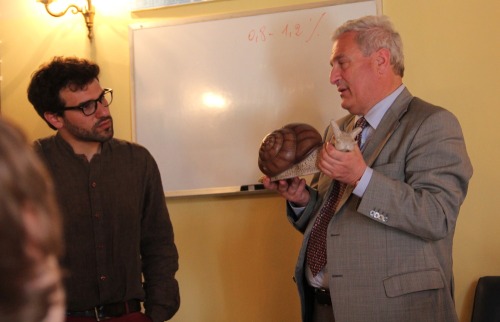

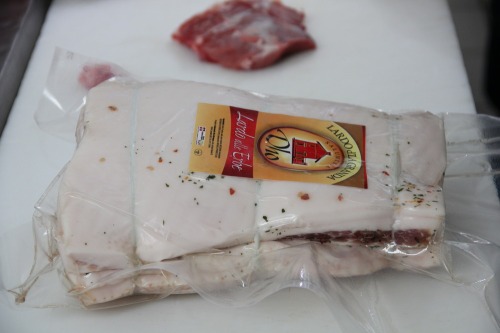



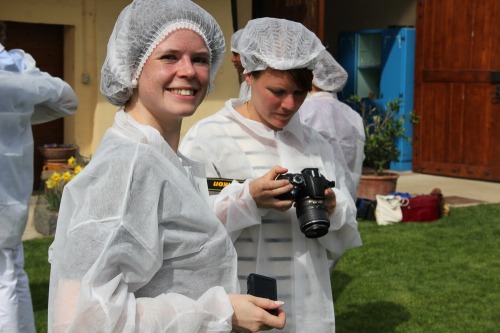

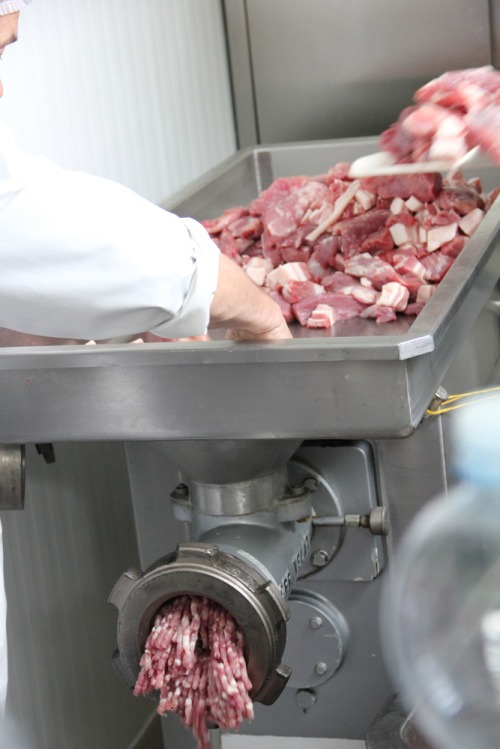





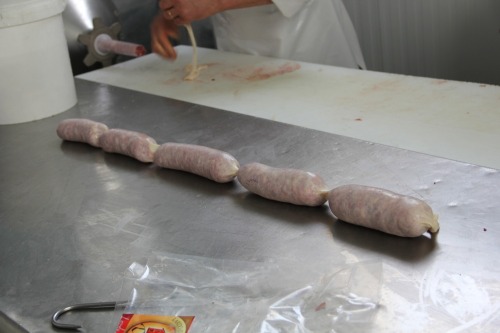

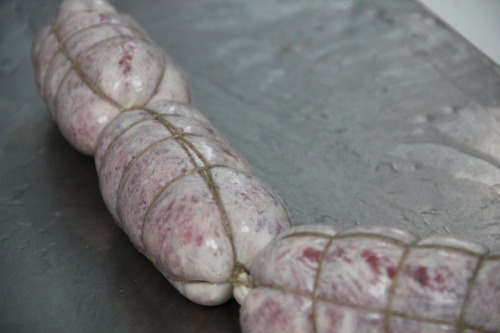

Just love your stories! What a wonderful adventure<o:p></o:p>From: Over The Table [mailto:post=overthetable.posterous.com@posterous.com] On Behalf Of Over The TableSent: Wednesday, April 13, 2011 4:42 PMTo: mclaire4@comcast.netSubject: [overthetable] Snails and sausage<o:p></o:p>